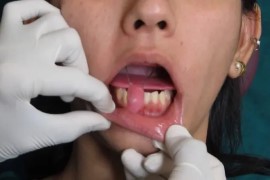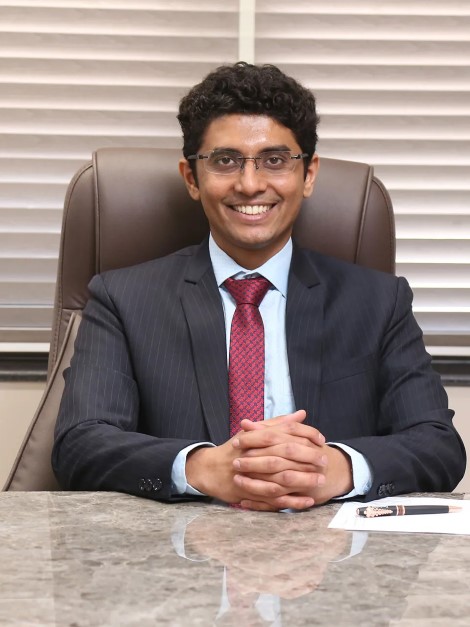Trismus corrections surgery for opening mouth affected by OSMF
Trismus correction surgery is a procedure performed to address restricted mouth opening caused by a condition called oral submucous fibrosis (OSMF). OSMF is a chronic, progressive disease that primarily affects the oral cavity, causing fibrosis (scarring) of the tissues and resulting in limited mouth opening, or trismus.
The goal of trismus correction surgery is to improve the mouth opening and restore normal function for eating, speaking, and maintaining oral hygiene. The specific surgical technique employed may vary based on the severity of the condition and the individual patient's needs.
What are the common symptoms of Trismus corrections surgery for opening mouth affected by OSMF?
Trismus correction surgery is a procedure performed to address limited mouth opening caused by a condition called Oral Submucous Fibrosis (OSMF). OSMF is a chronic, progressive disease that involves fibrosis or scarring of the oral tissues, leading to restricted mouth opening. The common symptoms of Trismus Corrections Surgery for opening the mouth affected by OSMF include:
- Limited mouth opening
- Difficulty in chewing and swallowing
- Stiffness and pain in the jaw
- Changes in oral tissues
Types of Trismus corrections surgery for opening mouth affected by OSMF?
There are several types of surgical procedures used for trismus correction to improve mouth opening in individuals affected by Oral Submucous Fibrosis (OSMF). The choice of procedure depends on the severity of the condition and the specific needs of the patient. Here are some common types of trismus correction surgery:
- Release of fibrous bands: This procedure involves the surgical release of the fibrous bands or scar tissue that are restricting mouth opening. The surgeon carefully cuts and removes the fibrotic tissue to allow for improved jaw mobility.
- Buccal Fat Pad (BFP) graft: In this procedure, a portion of the buccal fat pad (a specialized fat tissue in the cheek area) is harvested and used to create a graft. The graft is then placed in the oral cavity to help release and expand the fibrotic tissues, allowing for improved mouth opening.
- Temporomandibular Joint (TMJ) arthroscopy: TMJ arthroscopy involves the use of a small, minimally invasive camera to visualize and treat the temporomandibular joint. Through small incisions, the surgeon can access the joint, remove scar tissue, and improve jaw movement.
- Z-plasty technique: Z-plasty is a surgical technique used to lengthen and reposition scar tissue. It involves creating Z-shaped incisions to release the tightness caused by fibrotic bands. The new incisions help reorient the scar tissue in a way that promotes better mouth opening.
- Interpositional grafts: Interpositional grafts involve the placement of graft material between the fibrotic tissues to create space and promote stretching. Grafts can be made from various sources, including autologous tissue (such as a graft from the arm or thigh), synthetic materials, or tissue substitutes.
- Tissue engineering techniques: In more advanced cases, tissue engineering techniques may be utilized. This involves the use of bioengineered materials or cell-based therapies to promote tissue regeneration and improve mouth opening.
How to prepare for Trismus corrections surgery for opening mouth affected by OSMF?
- Consultation with an oral and maxillofacial surgeon: Schedule a consultation with a specialist experienced in OSMF management and trismus correction surgery. During the consultation, discuss your medical history, symptoms, and concerns. The surgeon will evaluate your specific case, perform a thorough examination, and explain the surgical options available to you.
- Medical evaluation: Your surgeon will conduct a comprehensive medical evaluation to assess your overall health and determine if you are a suitable candidate for surgery. This evaluation may include blood tests, imaging studies, and a review of your medical history and current medications. Be prepared to provide all relevant information during this evaluation.
- Communicate with your healthcare team: Inform your primary healthcare provider and any other specialists involved in your care about your decision to undergo trismus correction surgery. Share the details of your surgery and ensure coordination between your healthcare team to optimize your care and address any potential interactions or considerations related to your overall treatment plan.
- Follow preoperative instructions: Your surgeon will provide you with specific preoperative instructions to follow. These instructions may include guidelines regarding medication use, eating and drinking restrictions before surgery, and any necessary preparation of the surgical site. It is essential to adhere to these instructions to ensure your safety and the success of the procedure.
- Arrange for support: Depending on the extent of the surgery and your anticipated recovery needs, you may require assistance during the recovery period. Arrange for a family member, friend, or caregiver to accompany you to the surgery, drive you home afterward, and provide support during the initial stages of recovery.
- Plan for postoperative care: Discuss the postoperative care plan with your surgeon. Understand the expected recovery timeline, necessary dietary modifications, restrictions on activities, and follow-up appointments. Ensure that you have any required postoperative supplies, such as wound dressings or oral hygiene aids, readily available at home.
- Prepare your home: Before the surgery, ensure that your home is clean and organized, with any necessary supplies within easy reach. Create a comfortable recovery space with pillows, soft foods, and any other items recommended by your surgeon to support your healing and comfort.
- Emotional support: Trismus correction surgery can have emotional implications. Seek emotional support from loved ones, support groups, or counseling services to address any concerns or anxieties you may have.
Best Doctor For Trismus corrections surgery for opening mouth affected by OSMF In Ahmedabad
Dr. Manthan Merja (Patel)
MBBS, MS (Gen. Surgery) - B. J. Medical College.
MCh-Surgical Oncologist - GCRI, BJMC.
- FIOP (ESSO Europe)
- FARIS (Robotic Surgery)
- FALS (Robotic Surgery)
Dr. Manthan Merja is a consultant surgical oncologist in Ahmedabad. He is a qualified
oncologist with over 10 years of experience in the field. He is an expert in the
treatment of all types of cancer, including breast cancer, lung cancer, colorectal
cancer, and gastric cancer.
Dr. Merja completed his MBBS from BJ Medical College, Ahmedabad in 2012. He then went on
to complete his MS in General Surgery from the same college in 2015. In 2019, he
completed his MCh in Surgical Oncology from Gujarat Cancer & Research Institute.
FAQ About Trismus corrections surgery for opening mouth affected by OSMF
-
What is trismus correction surgery?Trismus correction surgery is a procedure performed to address limited mouth opening caused by Oral Submucous Fibrosis (OSMF). OSMF is a chronic, progressive condition characterized by fibrosis or scarring of the oral tissues, resulting in restricted mouth opening. Trismus correction surgery aims to release the fibrotic bands, improve jaw mobility, and restore a more normal range of mouth opening.
-
Am I a suitable candidate for trismus correction surgery?The suitability for trismus correction surgery depends on various factors, including the severity of the restricted mouth opening, the extent of the fibrosis, and your overall health. It is best to consult with an oral and maxillofacial surgeon or a specialist experienced in OSMF management to evaluate your specific case and determine if you are a suitable candidate for surgery.
-
How long does the trismus correction surgery take?The duration of trismus correction surgery can vary depending on the complexity of the case and the specific surgical technique used. It can range from a few hours to several hours. Your surgeon will provide you with a more accurate estimate of the expected surgery time based on your individual circumstances.


